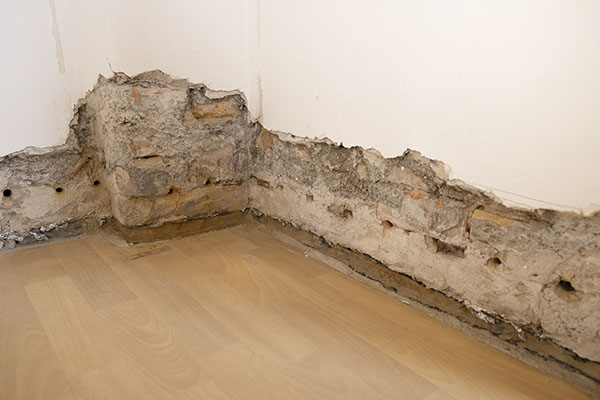Element 1: Contamination Sources
Exposure pathways start with a contamination source. Health assessors need to identify these sources, characterize the environmental media they might affect, and examine both contaminant and physical public health hazards that might exist at the site.



Identifying Contamination Sources
Some sites have just one contamination source, but many sites have numerous sources. Each source represents a location—a point or area—where contaminants were, are, or could be released into the environment.
Knowing the site’s contamination sources is critical for determining whether all environmental media (e.g., soil, surface water) that could possibly receive releases of contaminants from these sources have been adequately investigated. For example, if the contamination source is a leaking gasoline underground storage tank, reviewing levels of contamination in soil, soil gas, and groundwater, at a minimum, will be necessary to accurately determine potential population exposures.
Sometimes, however, you may identify contamination, but not be able to identify its original source. In such cases, you might conclude that a contamination source existed at some point in the site’s history, though the original release details might not be known. In other instances, the detected contamination could be naturally occurring or from another nearby location (source) — and in these cases, the contaminated materials could be considered a source for determining pathways.
Example of Contamination Sources
- Airfield and fire training areas
- Buried waste
- Detonation areas
- Disposal pits or trenches
- Drums and containers with chemical substances
- Emission stacks and vents
- Impoundments
- Lagoons
- Landfills
- Open burning areas
- Pipes/culverts
- Smokestacks
- Spills of chemicals
- Storage tanks
- Waste piles
- Waste ponds
To identify possible contamination sources, health assessors can review site descriptions and data (see Data Needs for the PHA process) from site investigation and environmental reports. In most cases, information on contamination sources is well-documented, largely because environmental investigations often are designed to conduct sampling at known or suspected source areas and in potentially affected media. Studying site plans and maps can provide additional perspective on the exact locations of contamination sources.
Important: Health assessors should evaluate all contaminants in environmental data, even if they may not be associated with the site itself. However, note in your evaluation that the contamination may not be associated with the site.
It is important to understand how sources of contamination could have changed over the years. Such insights can be gleaned from evaluating the following:
- Site history. Interview site contacts and local residents (after learning ATSDR’s community engagement process), study site plans and maps, and review site investigation reports to find out whether contaminants have been intentionally or unintentionally disposed of or released at a location during past or current site activities. If the information is available, find out when contaminant releases occurred and how long they persisted.
- Operating period. Find out when the site operated. This information will help you determine when certain contaminant sources may have existed, a crucial insight for determining durations of possible exposures to released contaminants.
- Source controls or remedial actions. Identify when specific cleanup activities or remedial actions began at a site to learn how environmental releases have been mitigated and if future exposures are possible. Also investigate whether any control measures were put in place, such as landfill liners, leachate collection systems, scrubbers, wastewater treatment systems, and baghouses.
- Other contributing sources. Consider if contaminants identified at the site could be released from other nearby sources, such as similar local industries. Other sources can provide useful perspective, particularly for air contamination. For instance, an emissions test might find that landfill vents release 10 pounds of benzene to the air in a year — but if the site is in an urban area, motor vehicles, gasoline stations, and other sources could be much higher contributors of benzene air emissions.
Ultimately, you will use information on contamination sources for perspective on the types and durations of possible exposures. Keep in mind that you will need to clearly document the following:
- The type and extent of source contamination and to what environmental media contaminants were released.
- Whether contamination sources have been adequately characterized.
- Whether source areas have been remediated.
- How the available information affects the ability to characterize exposures.
Identifying Affected Environmental Media
Identifying contaminated media and gaining an understanding of the nature and extent of contamination is usually a multi-step process. Use the following steps to start to characterize the media:
- Examining available sampling data.
- Evaluating sampling data quality and data representativeness.
- Reviewing detected concentrations.
- Making comparisons between site-related data and data from non-site-related and background sources.
- Comparing detected contaminant concentrations to media-specific screening levels.
Examples of Environmental Media that May Be Contaminated
- Air (indoor and outdoor)
- Biota (plants and animals)
- Groundwater
- Indoor dust
- Leachate
- Sediments
- Soil gas
- Surface and subsurface soils
- Surface water
- Waste materials such as sludge
Representative sampling data are critical for evaluating environmental media. Sampling data collected over time can tell you how long media have been contaminated and the extent to which remediation projects have been successful. Sampling air or water at different times of year can reflect seasonal differences. If media have not been adequately sampled, you will still need to determine whether they have been, are currently, or could become contaminated. In some cases, mathematical models might have been used to estimate environmental conditions at the site. If modeling is not possible, you could recommend that additional sampling take place. Information collected on environmental media can also help inform your evaluation of fate and transport (see that section for more information).
Identifying Physical/Safety Hazards
To ensure public health and safety, ATSDR also considers physical or safety hazards of sites or sources. During your site visit, you should examine whether physical or safety hazards are present. If so, be sure to consider them when drawing your site-specific conclusions. These types of hazards might not always be part of the exposure pathway, but when evaluating a site, be sure to identify any safety hazards that could harm people working or living on or near the site. Consult with site officials and other stakeholders, review site documents, and incorporate information gained from site visit observations to help identify hazards.
When examining any site-related hazard, evaluate the likelihood, if any, that people have access to unsafe areas before determining the extent to which a safety hazard exists. For example, an abandoned building could be in serious disrepair but pose no public safety threat because it is located inside a securely fenced, inaccessible area with no signs of trespassing (e.g., footprints or garbage). On the other hand, you may identify urgent physical hazards at a site that could result in immediate harm to someone. In these cases, you would want to alert the relevant parties (e.g., ATSDR partners, site managers) to help address urgent physical hazards quickly.
Examples of Physical and Safety Hazards
- Accumulation of explosive and asphyxiating gases and other fire or explosion threats
- Biological hazards
- Confined spaces
- Dangerous or abandoned equipment
- Debris
- Lagoons
- Open pits and mine shafts
- Unexploded ordnance (UXO)
- Unsafe structures
- Unsafe terrain

Learn about common types of site operations and history information that are often available.
Review a checklist [PDF – 270 KB] of all the different types of information commonly collected related to a site.